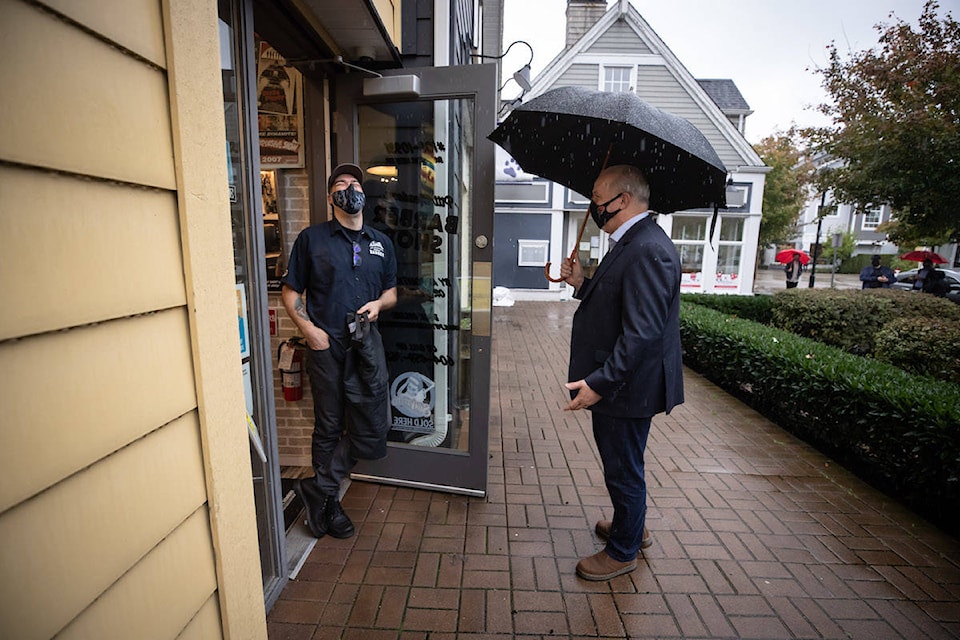Quiet polling places on Saturday indicated more than just a surge in mail-in and early voting, as B.C.’s COVID-19 pandemic election yielded the second lowest overall voter turnout on record, at about 52 per cent of eligible voters.
Elections B.C. reports that there were 3.49 million registered voters in the province for the 2020 election, and preliminary results show 1.21 million cast ballots at polling places on Oct. 24. By election day, another 525,000 mail-in voting packages had been received, either by mail or dropped off, out of a record 724,279 packages requested by voters. An additional 85,000 people cast absentee ballots, indicating a turnout of 52.4 per cent.
Elections B.C. data going back to the 1928 election show only one lower turnout, the 2009 election that saw former premier Gordon Campbell win a third majority on a turnout of 51 per cent of eligible voters.
For the first time, more people voted in advance polls than on election day. Elections B.C. reported Oct. 26 that 670,324 votes were cast by people in their own districts before election day, and 546,877 turned out on Oct. 24.
Mail-in and absentee ballots have to be counted in a manual process in each constituency, checked against in-person voting lists to ensure no one is able to vote more than once. With ballots sent back to each electoral district, the final count begins Nov. 6 and could take another week or more, possibly shifting results in some of the closely contested constituencies.
Preliminary results give NDP leader John Horgan a 55-seat majority, with the B.C. Liberal opposition reduced from 44 seats to 29. The B.C. Greens won three seats based on preliminary totals, losing former leader Andrew Weaver’s Oak Bay-Gordon Head constituency to the NDP and picking up West Vancouver-Sea to Sky from the B.C. Liberals.
Preliminary results show the NDP winning 45 per cent of the vote province-wide, with the B.C. Liberals taking 35 per cent, about four per cent less than the 2017 vote that saw incumbent premier Christy Clark fall just short of a majority.
RELATED: Horgan awaits final count before resuming government
RELATED: Polling places see trickle of voters on B.C. election day
The voting map shows the B.C. Liberals dominant on the entire east side of the province, with the NDP holding most seats on the Lower Mainland and the rest of coastal region. Speaking to reporters on Sunday, Horgan acknowledged that he has more work to do in the B.C. Interior.
“I’ve been tied in the legislature for big chunks of the year,” Horgan said. “I’ll be able to travel now more freely to other parts of the province … and be the spokesperson for the issues that we are bringing forward that will benefit rural British Columbia.”
One priority identified by Horgan is the forest industry, starting with a new minister to replace retired Stikine MLA Doug Donaldson. The NDP majority also has to deliver on its adoption of Indigenous rights legislation, as it focuses on the beginning of a liquefied natural gas export industry and other industrial development.
@tomfletcherbc
tfletcher@blackpress.ca
Like us on Facebook and follow us on Twitter.
